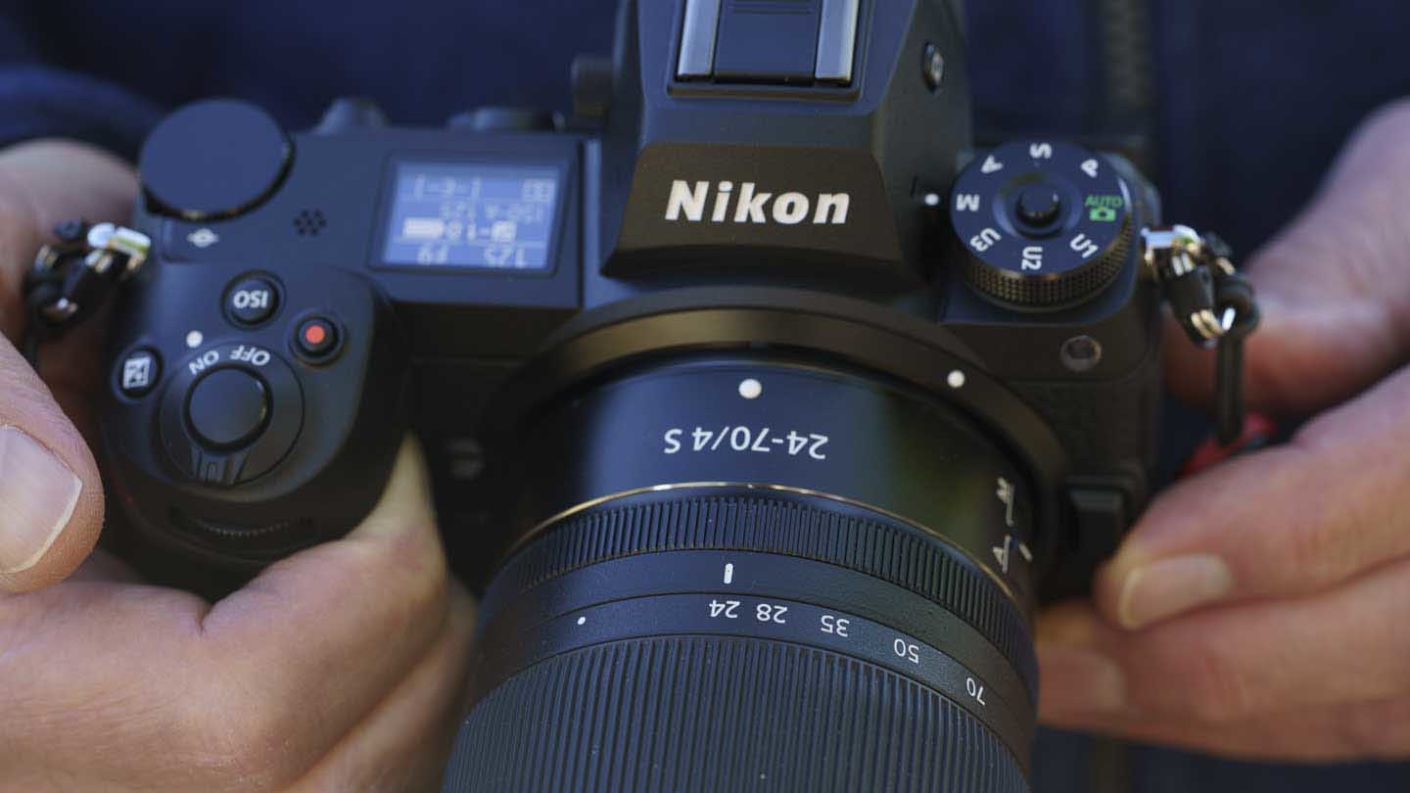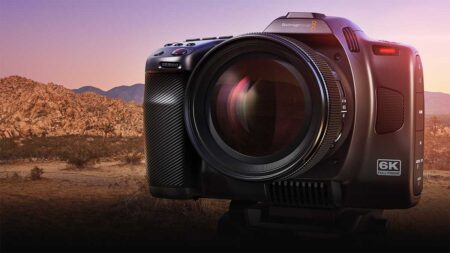When searching for which cameras have the highest fps in burst mode, you’ll want a camera with a powerful processing engine and, ideally, an electronic shutter.
It’s possible to shoot sport, wildlife and other fast-moving subjects with most cameras, but some make it a lot easier than others. You might be able to get the odd great shot, but you probably won’t be able to shoot a compelling action sequence that is consistently sharp unless your camera can shoot at a high frame rate in burst mode.
Frame rates are commonly referred to as fps, which means frames per second – in other words, how many images your camera can capture each second when holding down the shutter button. So what is the best fps camera? Let’s take a look…
What is the best camera for continuous shooting?
Traditionally, a DSLR has been the best camera for continuous shooting. Pro models like the Nikon D6 and enthusiast cameras like the Canon EOS 7D Mark II set the bar for capturing action sequences quickly without killing your buffer.
These days, companies like Sony, Olympus / OM System and Panasonic have developed some of the fastest mirrorless cameras we’ve seen, which push the envelope of what’s possible in continuous shooting mode. In fact, most of the options on this list of which cameras have the highest fps in burst mode are mirrorless cameras.
But as time goes on, technology advances and we’re now seeing impressive continuous shooting options in smartphone cameras. Huawei, for instance, offers 20fps shooting in burst mode, and many other smartphone manufacturers aren’t far behind.
So, really, the question of what is the best camera for continuous shooting these days comes down to size and how serious you are about your photography (in other words, are you a working professional or an advanced enthusiast).
If you’re looking to capture sequences of your kid’s football match or your dog running on the beach to complement your everyday photography, you might not need the best burst mode camera money can buy. An advanced smartphone might suit your needs.
If you’re looking to shoot wildlife or sport and take it very seriously, but don’t want to be burdened by heavy kit, consider a mirrorless camera. And if you don’t need full-frame resolution, some of the best fps camera options are APS-C format.
Conversely, if you shoot action for a living and you’ve already invested in a system and own several lenses, a pro-model DSLR is probably your best bet.
These cameras have the highest fps
Which cameras have the highest fps in burst mode? At the moment we’re just focusing on interchangeable lens cameras. That implies no disrespect to smartphone cameras, of course. But the reality is that most people buying a camera specifically for its continuous shooting capabilities are likely looking for something on the professional end of the market.
These are our picks for the best cameras for continuous shooting. In the near future we’ll update this post with options for smartphone shooters.
For a deeper dive into the many different camera types and features available, check out our range of camera buying guides.
Panasonic Lumix G9II
Specification
- Camera type: Mirrorless Micro Four Thirds
- Announced: 12th Sepetmber 2023
- Sensor: 25.2Mp Four Thirds type (17.3 x 13.0mm) Live MOS
- Lens mount: Micro Four Thirds
- Autofocus system: Hybrid (contrast and phase detection) with 779 phase points, 315 contrast points
- Stabilisation: 5 axis in-body IS to 8EV, 7.5 with Dual IS
- Screen: 3-inch 1.84-million-dot vari-angle touchscreen
- Viewfinder: 3.68-million-dot OLED electronic viewfinder with 0.74x magnification
- Key video specifications: [5.8K] 5760x4320 (4:3) at 29.97p, 200Mbps (4:2:0 10-bit LongGOP) (H.265/HEVC, LPCM) or 23.98p, 200Mbps (4:2:0 10-bit LongGOP) (H.265/HEVC, LPCM), [5.7K] 5728x3024 (17:9) at up to 59.94p, 300Mbps (4:2:0 10-bit LongGOP) (H.265/HEVC, LPCM), [4.4K] 4352x3264 (4:3) at up to 59.94p, 300Mbps (4:2:0 10-bit LongGOP) (H.265/HEVC, LPCM), [C4K] 4096x2160 at up to 119.88p, 300Mbps (4:2:0 10-bit LongGOP) (H.265/HEVC, LPCM), 59.94p, 800Mbps (4:2:2 10-bit ALL-Intra) (H.264/MPEG-4 AVC, LPCM), 59.94p, 600Mbps (4:2:2 10-bit ALL-Intra) (H.264/MPEG-4 AVC, LPCM), 59.94p, 200Mbps (4:2:2 10-bit LongGOP) (H.264/MPEG-4 AVC, LPCM), 59.94p, 200Mbps (4:2:0 10-bit LongGOP) (H.265/HEVC, LPCM)
- Sensitivity: Stills: Normal: ISO 100-25600, extended to IOS 50, V-Log ISO 500-12,800, extended to ISO 125. Video: Normal: Sensor output is 60fps or less (Base ISO 100): 50 (Extended ISO) / 100-12800, Sensor output is 61fps or higher (Base ISO 100): 50 (Extended ISO) / 100-3200 / 4000-12800 (Extended ISO) V-Log: Sensor output is 60fps or less (Base ISO 500): A125-400 (Extended ISO) / 500-12800, Sensor output is 61fps or higher (Base ISO 250): 125-200 (Extended ISO) / 250-3200 / 4000-12800 (Extended ISO) Hybrid Log Gamma: Sensor output is 60fps or less (Base ISO 250): 250-12800 Sensor output is 61fps or higher (Base ISO 250): 250-3200 / 4000-12800 (Extended ISO)
- Shutter speed: Stills: 60-1/8,000sec, Electronic front curtain shutter: Bulb (Max. 30 minutes), 1/2,000 - 60 Electronic shutter: Bulb (Max. 60 sec), 1/32,000 - 60 Video: 1/25,000 - 1/25m Creative Video M mode / MF mode: 1/25,000 - 1/8
- Maximum continuous shooting rate: Mechanical shutter: H: 14 frames/sec (AFS/MF), 10 frames/sec (AFC) (with Live View), Electronic front curtain shutter: H: 14 frames/sec (AFS/MF), 9 frames/sec (AFC) (with Live View), Electronic shutter: SH75: 75 frames/sec (AFS/MF), SH60: 60 frames/sec (AFS/AFC/MF), SH75 PRE: 75 frames/sec (AFS/MF), SH60 PRE: 60 frames/sec (AFS/AFC/MF), SH20 PRE: 20 frames/sec (AFS/AFC/MF)
- Memory: Dual SD card slots, both UHS-II
- Battery life: With SD card: 370 images, 1300 images (Power Save LVF mode)
- Weight: 658g / 1.45 lb (Body, Hot Shoe Cover, Battery, SD Memory Card x 1) (excluding body cap), 575g / 1.27 lb (Body, Hot Shoe Cover) (excluding body cap)
- Dimensions (WxHxD): 134.3 x 102.3 x 90.1 mm / 5.29 x 4.03 x 3.55 inch (Body only, excluding protrusions)
The Panasonic G9 II is equipped with a 25.2-megapixel Live MOS Sensor, paired with a newly developed processing engine. This combination is touted to produce high-resolution images characterized by remarkable color depth. Furthermore, this duo enables the camera to achieve a rapid continuous shooting speed of up to 60 frames per second (fps) in AFC (continuous autofocus) mode with the use of its electronic shutter, and 10fps when using the mechanical shutter. These speeds are reportedly sustainable for over 160 combined raw and Jpeg images, 170 raw images, or more than 200 Jpeg images.
Adding to its capabilities, the G9 II features the SH Pre-burst recording mode. This innovative feature allows the camera to start capturing images up to 1.5 seconds before the shutter release is fully pressed, ensuring that approximately 113 consecutive shots are taken in one sequence. This is particularly useful for capturing fleeting moments and actions that occur in the blink of an eye.
£1699
€1899 / $1599For
- Phase detection focusing with subject detection
- V-log pre-installed
- Hand-held 100MP High Resolution mode
Against
- Large for a Micro Four Thirds camera
Canon EOS R6 Mark II
Specification
- Camera Type: Mirrorless
- Announced: 2nd November 2022
- Sensor: 24.2MP Full-frame Dual Pixel CMOS AF II
- Processor: Digic X
- Lens mount: RF
- Sensitivity range: Stills: ISO 100-102,400 expandable to ISO 50-204,801, Video: ISO 100-25,600 expandable to ISO 204,801
- File formats: Raw + Jpeg/HEIF, MP4 H.264/H.265
- Continuous shooting rate: Mechanical shutter: 12fps for 1000+ Jpeg or 110 raw or 1000 CRAW images, Electronic shutter: 40fps for 190 Jpeg or 75 raw or 140 CRAW images, or 20fps, 5fps all with AF tracking
- Maximum video resolution: 4K (3840 x 2160) up to 60fps, Full HD (1920 x 1090) at up to 120fps
- Autofocus system: Dual Pixel CMOS AF II phase detection with 100% coverage
- Viewfinder: 0.5-inch 3.69million-dot OLED electronic viewfinder with 120fps refresh rate
- Screen: 3-inch 1.62-million dot vari-angle touchscreen
- Autofocus: Dual Pixel CMOS AF II with Advanced Animal AF (recognising dogs, cats and birds) supported in all video modes with 100% coverage and up to 1053 'AF segments'
- Stabilisation: In-body image stabilisation (IBIS) that works with lens IS and enables up to 8-stops of shutter speed compensation
- Storage: Dual slots, 2x SDXC UHS-II
- Dimensions: 138.4 x 98.4 x 88.4mm
- Weight: 588g / 670 g with card and battery
The Canon R6 II, when utilising its electronic shutter, boasts a remarkable continuous shooting speed of 40fps, supported by its advanced processor and sensor. This mode allows for the capture of up to 75 raw images or 190 Large Jpegs, all with autofocus and tracking capabilities. If less speed is required, the rate can be adjusted to 20fps or 5fps. Switching to the mechanical shutter, the maximum shooting rate is 12fps, but this increases the burst capacity significantly, allowing for over 1000 Jpegs, 110 raw files, or 1000 CRAW files.
Mirroring the capabilities of the APS-C format Canon EOS R7, the R6 II features a Raw Burst mode. In this mode, it can capture up to 191 raw images at 30fps, complete with autofocus tracking. Uniquely, this mode includes a pre-capture function that begins 0.5 seconds before the shutter button is fully pressed, ensuring you don’t miss a moment of unpredictable action. However, it’s important to note that to use these images individually, they must be extracted from the captured sequence. This can be done using Canon’s Digital Photo Professional software or directly in the camera, and the images can be saved as separate Jpeg, HEIF, or raw files.
£2800
€3149.99For
- Popular pixel count
- Fantastic subject detection AF
- 4K video oversampled from 6K
Against
- Different control layout from R5 and R3
- Sensor not stacked or BSI
Nikon Z9
Specification
- Camera type: Full-frame mirrorless camera
- Announced: 28th October 2021
- Lens mount: Nikon Z
- Sensor: Full-frame (FX 35.9 x 23.9mm) 45.7MP stacked backside illuminated (BSI) sensor
- Processing engine: Expeed 7
- Stabilisation: 5-axis sensor shift giving 6EV shutter speed compensation
- Sensitivity: ISO 64-25,600, expandable to ISO 32-102,400
- Maximum continuous shooting rate: 20fps for up to 1000+ raw (high efficiency) files or 685 raw (high efficiency *) files, 30fps for up to 1000+ normal-quality Jpegs, or 120fps normal-quality 11Mp Jpegs
- Autofocus system: Hybrid with phase and contrast detection
- Phase detection points: 493
- AF-area modes: Pinpoint (available in photo mode only), single-point, dynamic-area (S, M, and L; available in photo mode only), wide-area (S and L), and auto-area AF, 3D-tracking (available in photo mode only), subject-tracking AF (available in video mode only)
- Video resolution: 8K (7680 x 4320): 30p (progressive)/25p/24p, 4K (3840 x 2160): 120p/100p/60p/50p/30p/25p/24p, Full HD (1920 x 1080): 120p/100p/60p/50p/30p/25p/24p
- Video file format: MOV, MP4
- Video compression: Apple ProRes 422 HQ (10 bit), H.265/HEVC (8 bit/10 bit), H.264/AVC (8 bit)
- Viewfinder: 0.5-inch 3.69-million-dot, 3,000-nit OLED viewfinder
- Screen: 3.2-inch 2,100,000-dot 4-way-tilting touch-screen
- Storage: Dual XQD/CFexpress
- Dimensions (W x H x D): 149 x 149.5 x 90.5 mm / 5.9 x 5.9 x 3.6 inches
- Weight: 1340 g / 2 lb. 15.3 oz.with battery and memory card but without body cap and accessory shoe cover, Body only: 1160g / 2 lb. 9 oz.
The Nikon Z9 stands out with its impressive shooting capabilities, delivering 20fps in full-resolution for raw files, 30fps for Jpegs, and a remarkable 120fps at 11Mp. This performance is complemented by an exceptional autofocus system, featuring highly effective Eye-detection.
When using the right memory card, such as the ProGrade Digital Cobalt CFexpress as recommended by Nikon, the Z9 can shoot full-resolution raw (high efficiency) files at up to 20fps, with a burst depth exceeding 1000 images. For those who prefer shooting in Jpeg, the camera’s new C+ mode allows pushing the rate to 30fps for full-resolution normal-quality Jpegs. In a different setup, the Z9 can achieve 120fps for 11Mp normal-quality Jpeg images, maintaining full autofocus and exposure metering, and these high shooting speeds can be utilized with shutter speeds up to 1/3200 second.
A unique aspect of the Nikon Z9 is its lack of a mechanical shutter, relying solely on an electronic shutter. Nikon asserts that the sensor boasts the world’s fastest scan rate for chips over 30Mp, significantly reducing rolling-shutter distortion, also known as the jello effect, to nearly negligible levels.
£5299
€6299For
- New 45.7Mp full-frame sensor sensor
- Advanced AF system
- Durable, weatherproof build
Against
- No mechanical shutter
- Firmware updates to come in 2022 to get the full video feature set
Nikon Z8
Specification
- Camera type: Full-frame mirrorless camera
- Announced: 10th May 2023
- Lens mount: Nikon Z
- Sensor: Full-frame (FX 35.9 x 23.9mm) 45.7MP stacked backside illuminated (BSI) sensor
- Processing engine: Expeed 7
- Sensitivity: ISO 64-25,600, expandable to ISO 32-102,400
- Maximum continuous shooting rate: 20fps for up to 1000+ raw (high efficiency) files or 685 raw (high efficiency *) files, 30fps for up to 1000+ normal-quality Jpegs, or 120fps normal-quality 11Mp Jpegs
- Autofocus system: Hybrid with phase and contrast detection
- Phase detection points: 493
- Subject detection: People (eyes, faces, head and torso), animals (whole bodies and heads and eyes for cats, dogs, birds and ‘other animals’), cars, motorbikes, bicycles, trains and aeroplanes.
- Stabilisation: 5-axis in-body image stabilisation (IBIS) that can work in tandem with lens-based stabilisation (VR)
- Video resolution: 8K (7680 x 4320): 30p (progressive)/25p/24p, 4K (3840 x 2160): 120p/100p/60p/50p/30p/25p/24p, Full HD (1920 x 1080): 120p/100p/60p/50p/30p/25p/24p
- Video file format: MOV, MP4, NEV
- Video compression: N-RAW (12 bit), Apple ProRes RAW HQ (12 bit), Apple ProRes 422 HQ (10 bit), H.265/HEVC (8 bit/10 bit), H.264/AVC (8 bit)
- Viewfinder: 0.5-inch 3.69-million-dot, 3,000-nit OLED viewfinder
- Screen: 3.2-inch 2,100,000-dot 4-way-tilting touch-screen
- Storage: Dual XQD/CFexpress
- Dimensions (W x H x D): 144 x 118.5 x 83mm / 5.7 x 4.7 x 3.3 inches
- Weight: 910g / 2 lb. 0.1 oz. with battery and memory card but without body cap and accessory shoe cover, 820g / 1 lb. 13 oz. body only
Like the Nikon Z9, the Z8’s advanced sensor and processor combo empowers it to shoot full-resolution raw files at a rapid pace of 20 frames per second (fps), maintaining this speed for over 1000 shots with a suitable CFexpress card.
In C+ mode, the Z8 can accelerate its shooting speed to 30fps, capturing full-resolution, normal-quality Jpegs. For even higher speeds, reducing the resolution to 19MP with a DX crop allows for shooting at an impressive 60fps. Furthermore, lowering the resolution to 11Mp enables the camera to reach a remarkable continuous shooting rate of 120fps, all while maintaining full autofocus and exposure metering functions.
Beyond Jpeg and NEF raw files, the Nikon Z8 offers the option to record HEIF files, which boast 10-bit color depth and a broader dynamic range compared to the traditional 8-bit Jpegs. However, a notable consideration is the limited current support for HEIF images in various software and platforms.
£3999
$3997For
- Smaller & lighter body than Nikon Z9
- Advanced AF system with subject detection
- Weatherproof build
Against
- No mechanical shutter
- Shorter battery life than Nikon Z9
Sony A1
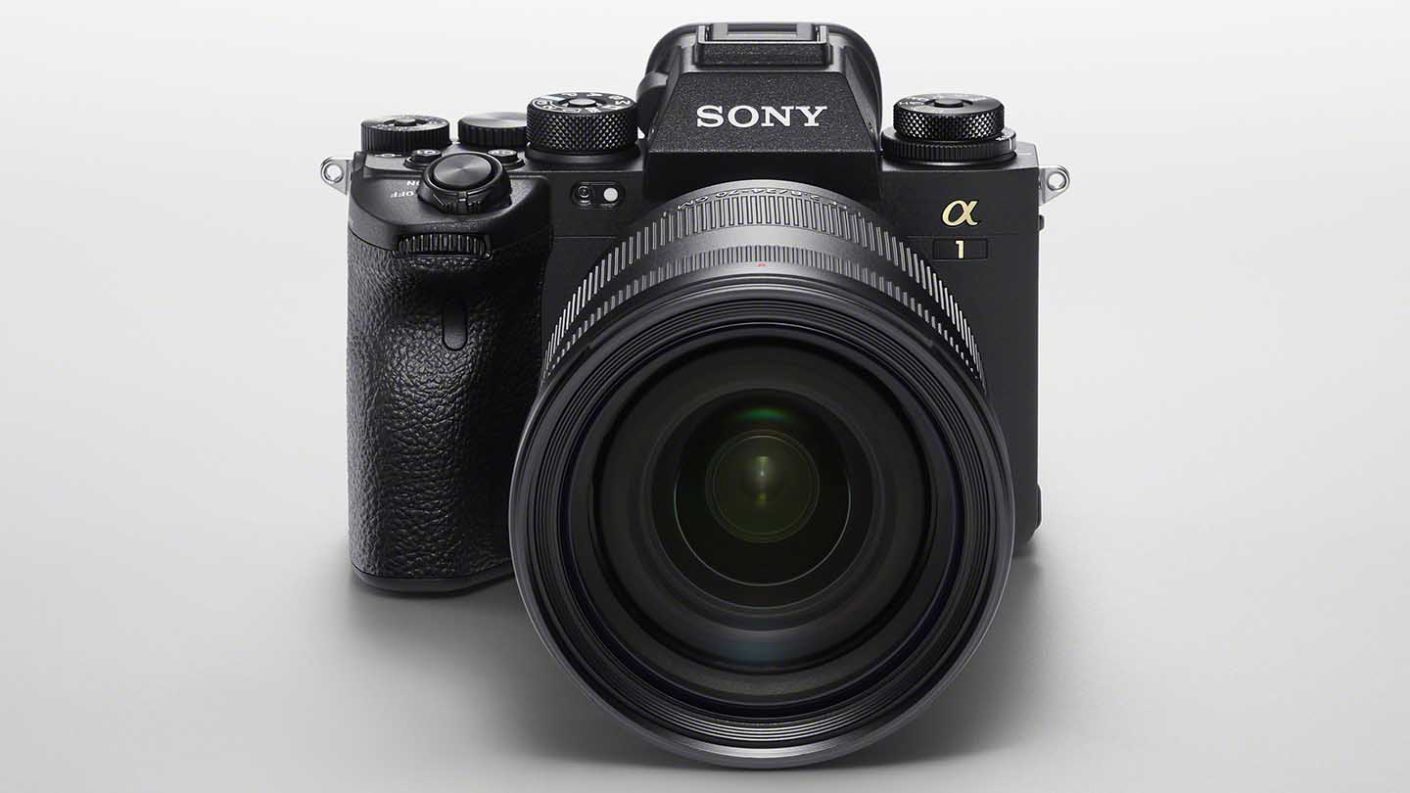
Specification
- Camera type: Full-frame mirrorless
- Sensor: 50.1Mp full frame (35.9 x 24.0mm), Exmor RS CMOS sensor
- Still Image format: Jpeg, HEIF, raw (Sony ARW 4.0)
- Autofocus system: Hybrid AF with 759 phase detection points and 425 contrast detection points, Still images: Human (Right/Left Eye Select) / Animal (Right/Left Eye Select) / Bird, Movie: Human (Right/Left Eye Select), sensitive down to -4EV
- Maximum continuous shooting rate: Mechanical shutter: 10fps, Electronic shutter 30fps
- Stills shutter speed range: Mechanical shutter: 1/8000-30sec plus Bulb, Electronic shutter: 1/32000-30sec plus Bulb
- Max flash sync speed (full-frame): Mechanical shutter: 1/400 sec, Electronic shutter: 1/200 sec
The 50.1Mp Sony A1 is particularly noteworthy for this list, blending its high-resolution capabilities with rapid shooting speeds in a way that sets it apart. While some cameras can achieve up to 60fps under specific conditions, the A1’s balance of resolution and speed is commendable.
For photographers requiring full-resolution uncompressed raw files, the A1 is capable of shooting at speeds up to 20fps. However, for those who prefer compressed raw files, or Jpegs or HEIF files, the A1 steps up its game, offering a maximum continuous shooting rate of 30fps when using its electronic shutter. This rate is accompanied by continuous autofocus and exposure measurement, ensuring accuracy in fast-paced shooting scenarios.
In practical terms, the A1 can capture up to 155 full-frame compressed raw images or 165 full-frame Jpeg images at a speed of 30fps. This rate translates to just over 5 seconds to shoot 155 files, which in real-world photography feels like an extensive and continuous burst of images, capturing every detail of the action.
£6500
$6500For
- Excellent combination of speed and resolution
- Great range of video features including 8K video
- Superb electronic viewfinder
Against
- It takes a while to figure out the optimum settings
- Underwhelming screen specification
- Manual switching between the Eye AF subjects
Canon EOS R3
Specification
- Camera Type: Mirrorless
- Announced: 14th September 2021
- Sensor: 24.1Mp Full-frame BSI stacked CMOS
- Processor: Digic X
- Lens mount: RF
- Sensitivity range: Stills: ISO 100-102,400 expandable to ISO 50-204,800, Video: ISO 100-25,600 expandable to 100-102,400
- Metering: 384-zone metering with Evaluative metering (linked to All AF points), Partial metering (approx. 5.9% of viewfinder at centre), Spot metering: Centre spot metering (approx. 2.9% viewfinder at centre), Centre weighted average metering
- Shutter speed range: Mechanical shutter: 30- 1/8,000 sec and Bulb, Electronic shutter: 30-1/64,000 sec
- Still file formats: Raw + Jpeg/HEIF
- Maximum continuous shooting rate: Mechanical shutter / 1st curtain electronic: 12fps for 1000+ Jpeg or 1000 raw, Electronic shutter: 30fps for 540 Jpegs or 150 raw images
- Main video resolutions: 6K DCI (17:9) 6000 x 3164 (59.94, 50, 29.97, 25, 24, 23.98fps) raw, 4K DCI (17:9) 4096 x 2160 (59.94, 50, 29.97, 25, 24, 23.98fps) intra or inter frame / light inter frame 4K UHD (16:9) 3840 x 2160 (119.9, 100, 59.94, 50, 29.97, 25, 23.98 fps) intra or inter frame Full HD (16:9) 1920 x 1080 (119.9, 100, 59.94, 50, 29.97, 25, 23.98 fps) intra or inter frame Full HD (16:9) 1920 x 1080 HDR (29.97, 25 fps) inter frame
- Video conatiner formats: MP4, raw (CRM)
- Colour sampling: 6K raw 12bit, 4K/ Full HD - 4:2:0 8-bit or 4:2:2 10bit
- Log: Canon Log 3
- Autofocus system: Dual Pixel CMOS AF II phase detection with 1,053 points
- Viewfinder: 0.5-inch 5.76million-dot OLED electronic viewfinder with 120fps display and 0.76x magnification
- Screen: 3.2-inch 4.15-million dot vari-angle touchscreen
- Stabilisation: In-body image stabilisation (IBIS) that works with lens IS and enables up to 8-stops of shutter speed compensation
- Storage: Dual slots, 1x CFexpress, 1x SDXC UHS-II
- Dimensions: 150x 142.6 x 87.2mm
- Weight: 822g body only, 1015g with card and battery
For an in-depth understanding of the Canon EOS R3 and its extensive features, our full review offers a comprehensive breakdown. However, for those specifically interested in action photography, the EOS R3 stands out for its remarkable speed.
When using the mechanical shutter, the EOS R3 allows shooting at speeds ranging from 30 seconds to 1/8,000 of a second. Switching to the electronic shutter further extends this range to 30 seconds to 1/64,000 of a second, making it exceptionally adept at capturing fast-moving subjects. Many of Canon’s recent mirrorless models have been designed with action photography in mind, and the EOS R3, although on the higher end of the price spectrum, ranks as one of the best Canon cameras for this purpose.
Equipped with a 24MP sensor and the Digic X processor, the EOS R3 is capable of shooting raw or Jpeg files at up to 30fps, complete with full exposure metering and autofocus (AF) tracking, when using the electronic shutter. This feature is especially beneficial for sports photographers who need to capture fleeting moments without making a sound. For less intense action, the shooting rate can be adjusted to 15fps or 3fps, accommodating a range of photographic needs.
The R3’s design also emphasizes attention to detail. Canon has incorporated features like Flicker detection and a High Frequency anti-flicker shooting mode in the R3. These features are instrumental in identifying and compensating for flickering light sources, thereby preventing banding or inconsistencies in color and exposure in images taken indoors under artificial lighting conditions.
£5880
$5999 / €6689.99For
- 24Mp full-frame sensor with full AF coverage
- 12fps/30fps continuous shooting with continuous AF
- Eye Control AF
Against
- 6K raw video requires lots of storage capacity
- Control layout different from EOS-1D X mark III and existing R-series cameras
- Less durable buttons than on the 1D X III
Canon EOS R7
Specification
- Camera type: Mirrorless
- Announced: 24th May 2022
- Sensor: 32.5Mp APS-C format (22.3 x 14.8mm) CMOS
- Processor: Digic X
- Lens mount: Canon RF
- Sensitivity range: ISO 100-32,000 expandable to ISO 51,200
- AF system: Dual Pixel CMOS II AF phase detection with up to 5915 positions and 651 automatically selectable points
- Subject detection and tracking: Humans (Eyes/Face/Head/Body), Animals (Dogs, Cats and Birds) or Vehicles (Racing cars or Motor bikes)
- Viewfinder: 0.39-type 2,360,000-dots OLED EVF
- Screen: Touch-sensitive vari-angle 2.95-inch LCD with 1.62 million dots
- Video resolution: 4K (3840 x 2160) at up to 60p, Full HD: (1920 x 1080) at up to 120p
- Max continuous shooting rate: Mechanical shutter: 15fps for up to 224 Jpegs or 51 raw files, Electronic shutter: 30fps for 126 Jpegs or 42 raw files
- Shutter speed range: Mechanical: 30-1/8000 sec, Bulb, Electronic: 30-1/16000 sec
- Built-in flash: No
- Battery: Li-ion LP-E6N, Viewfinder: Approx. 500 shots Screen: Approx 770 shots
- Dimensions (W x H x D): 132.0 x 90.4 x 91.7mm
- Weight: 612g including battery and memory card
The Canon EOS R7, Canon’s premier APS-C format camera, is designed as the successor to the EOS 7D series of DSLRs, with the most recent model being the EOS 7D Mark II. These DSLR models have been favored by sports and wildlife photographers due to their impressive burst rates.
The EOS R7 combines a 32.5MP sensor with Canon’s advanced Digic X series processing engines. This powerful pairing allows for a maximum continuous shooting rate of 15 frames per second (fps) using the mechanical shutter and an impressive 30fps with the electronic shutter. These high rates are achievable at full resolution, complete with full autofocus and metering capabilities.
Additionally, the EOS R7 boasts the same Dual Pixel CMOS AF II technology found in the EOS R3 and R5. It features intelligent subject detection and tracking, utilizing deep learning algorithms to enable precise detection and focusing on people, animals, and vehicles.
The EOS R7, along with the EOS R3, ranks as one of the fastest cameras available from Canon. Though the EOS R6 Mark II holds the title for Canon’s fastest.
£1350
$1499 / €1649.99For
- Phase detection focusing and intelligent subject detection
- 32.5MP APS-C sensor
- Same mount as Canon R3, R5 and R6
Against
- Limited RF-S lens range
- Unique control arrangement
- Lack-lustre viewfinder and screen specification
Canon EOS R5
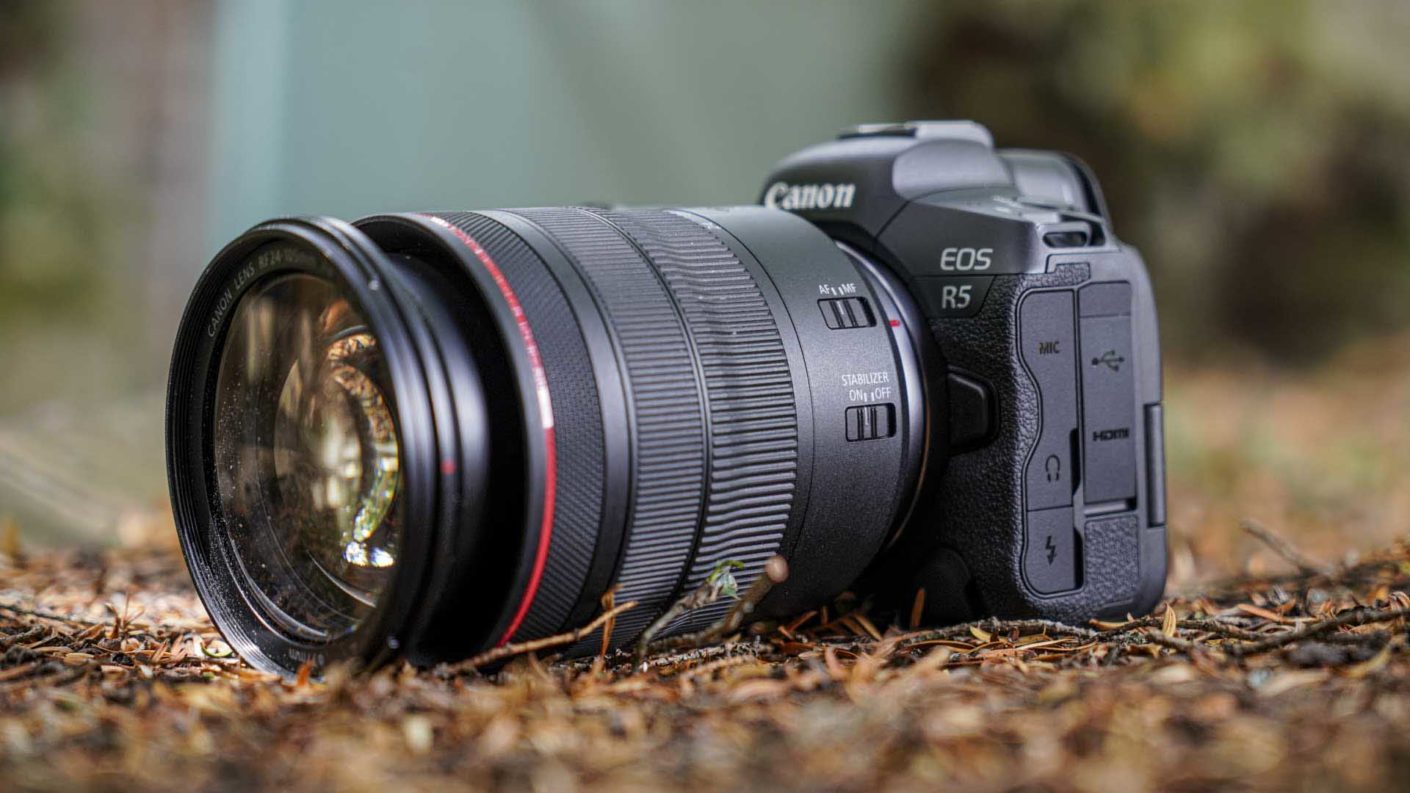
Specification
- Camera Type: Mirrorless
- Announced: 9th July 2020
- Sensor: 45Mp Full-frame Dual Pixel CMOS AF II
- Processor: Digic X
- Lens mount: RF
- Sensitivity range: Stills: ISO 100-51,200 expandable to ISO 50-102,400, Movies: ISO 100-25600, expandable to ISO ISO 51,200
- Metering: 384-zone metering with Evaluative metering (linked to All AF points), Partial metering (approx. 6.1% of viewfinder at centre), Spot metering: Centre spot metering (approx. 3.1% viewfinder at centre), Centre weighted average metering
- Shutter speed range: 1/8000sec-30 seconds and Bulb
- File formats: Raw + Jpeg/HEIF, MP4
- Maximum continuous shooting rate: Mechanical shutter: 12fps, Electronic shutter: 20fps
- Maximum video resolution: Uncropped, internal raw recording 8K video at up to 29.97fps in 4:2:2 10-bit in Canon Log (H.265) or 4:2:2 10-bit HDR PQ (H.265), Uncropped internal recording 4K video at up to 119.88fps in 4:2:2 10-bit in Canon Log (H.265) or 4:2:2 10-bit HDR PQ (H.265) 4:2:2 10-bit in Canon Log or 4:2:2 10-bit HDR PQ, 4K output over HDMI at up to 59.94fps
- Autofocus system: Dual Pixel CMOS AF II phase detection with 5940 points in stills and 4500 points in movie mode
- Viewfinder: 0.5-inch 5.76million-dot OLED electronic viewfinder with 120fps display and 0.76x magnification
- Screen: 3.15-inch 2.1-million dot vari-angle touchscreen
- Autofocus: Dual Pixel CMOS AF II with Advanced Animal AF (recognising dogs, cats and birds) supported in all video modes with 100% coverage and up to 1053 'AF segments'
- Stabilisation: In-body image stabilisation (IBIS) that works with lens IS and enables up to 8-stops of shutter speed compensation
- Storage: Dual slots, 1x CFexpress, 1x SDXC UHS-II
- Dimensions: 135.8 x 97.5 x 88mm
- Weight: 650 g / 738 g with card and battery
Introduced alongside the 20Mp Canon EOS R6, the Canon EOS R5, with its 45Mp resolution, closely rivals the Sony A1 in terms of image detail. It boasts the capability to shoot at speeds of up to 20 frames per second (fps), complete with full autofocus (AF) and exposure functionality.
The EOS R5 shares a feature with both the Sony A1 and Canon EOS R6: an advanced Eye detection system. This system is adept at identifying human or animal eyes within the frame, even at high speeds. This functionality is particularly useful when shooting at 20fps, allowing photographers to focus more on composition and framing while being assured of sharp, precise focus on the subject’s eyes.
£4199
$3899For
- 45Mp full-frame sensor with full AF coverage
- 12fps/20fps continuous shooting with continuous AF
- Uncropped internal 8K video recording for up to 20 minutes
Against
- 8K video will require lots of storage capacity
Fujifilm X-H2S
Specification
- Camera type: Mirrorless
- Announced: 31st May 2022
- Sensor: 26.16Mp APS-C (23.5 x 15.6mm) X-Trans CMOS 5 HS
- In body image stabilisation: 5-axis giving up to 7EV shutter speed compensation
- Processing engine: X-Processor 5
- Lens mount: Fujifilm X
- Sensitivity range: ISO 160-12,800 expandable to ISO 80-51,200
- Autofocus system: Intelligent Hybrid with up to 425 points plus subject detection for humans, animals, birds, automobiles, motorcycles, aeroplanes and trains
- Max continuous shooting rate: Electronic shutter: 40fps for 184 jpegs, 170 lossless compressed raw or 140 uncompressed raw, Mechanical shutter: 15fps for 1000+ jpegs, lossless compressed raw or 1000 uncompressed raw
- Max video resolution: 6.2K (6240x4160) 29.97/25/24/23.98p, DCI 4K (4096x2160) 59.94/50/29.97/25/24/23.98p or 120/100p in High Speed mode, 4K (3840x2160) 59.94/50/29.97/25/24/23.98p or 120/100p in High Speed mode
- Viewfinder: 0.5 inch 5.76 million-dot OLED Color Viewfinder with 100% coverage Eyepoint: approx. 24mm Diopter adjustment: -5~+3m-1 Magnification: 0.8× with 50mm lens
- Screen: Vari-angle 3-inch LCD with 1.62-million dots
- Dimensions: 136.3 x 92.9 x 84.6mm
- Storage: Dual: 1x CFexpress type B, 1x DS/SDHC/SDXC UHS-II
- Weight: 579g (body only), 660g with battery and card
As one of the successors to the Fujifilm X-H1, the Fujifilm X-H2S targets sport and wildlife photographers, as well as anyone enthusiastic about capturing moving subjects. This camera boasts a new 26.1MP stacked sensor, representing the fifth generation of Fujifilm’s X-Trans CMOS technology. It notably broadens the range of subjects that can be automatically detected, including animals, birds, automobiles, motorcycles, airplanes, and trains.
This cutting-edge sensor is coupled with the fifth generation X Processor (X-Processor 5), which offers double the processing speed of its predecessor. Such advancements empower the X-H2S to reach a maximum continuous shooting rate of 40 frames per second (fps) at full resolution, while maintaining comprehensive autofocus (AF) capabilities.
Earning a five-star rating from us, the X-H2S stands out as a truly remarkable camera. Its capability to shoot bursts at 40fps positions it as one of the fastest mirrorless cameras currently available on the market.
£2499
$2499For
- 40fps continuous shooting with AF
- Subject detection at 40fps and during video
- 6.2K video
Against
- Change in control layout in comparison with the X-H1
- Focus mode switch replaced with a button
- No dedicated exposure compensation dial
OM System OM-1
Specification
- Camera type: Mirrorless
- Announced: 15th February 2022
- Sensor: 20.4Mp Four Thirds Type (17.3 x 13.0mm) CMOS
- Lens mount: Micro Four Thirds
- Sensitivity range: ISO 80-102,400
- In body stabilisation: 5-axis giving up to 7EV shutter speed compensation, 8EV when combined with lens IS
- Processing engine: TruePic X
- Autofocus system: Hybrid with 1053 cross-type phase detection points and 1053 contrast detection points
- Max continuous shooting rate: Mechanical shutter: 10fps
- Pro Capture High Mode: 120fps (with Pro lenses) or 50fps AF tracking
- Max video resolution: 4K (4096 x 2160) at 30, 25, 24p(approx. 102Mbps), 60, 50p (approx. 202Mbps), 4K (3840 x 2160) 30p, 25p, 24p (approx. 77Mbps), 60, 50p (approx. 152Mbps) all in LongGOP, Full HD (1920 x 1080) 30, 25, 24p / ALL-I(approx. 82Mbps), LongGOP(approx. 22Mbps) 60, 50p ALL-I(approx. 162Mbps, LongGOP(approx. 42Mbps)
- Video format: MOV (MPEG-4AVC/H.264)
- Viewfinder: 5.76M-dot OLED
- Screen: 3-inch 1,.62M-dot vari-angle touchscreen
- Storage: 2x SD/SDHC/SDXC (UHS-II)
- Dimensions (WxHxD): 134.8 x 91.6 x 72.7mm
- Weight: 511g (body only), 599g including battery, 1 memory card but excluding the eye cup
The OM System OM-1 ushers in the new TruePic X image processor, boasting a processing speed three times faster than its predecessor. Coupled with an innovative sensor, this combination enables the OM-1 to achieve a remarkable maximum continuous shooting rate of 120 frames per second (fps) in Sequential Shooting SH1 or Pro Capture SH1 mode. In these modes, focus and exposure are set at the beginning of the sequence, and this high rate can be maintained for up to 92 raw or Large Fine Jpeg files. Additionally, the camera offers Sequential Shooting SH2 and Pro Capture SH2 modes, which support shooting speeds of up to 50fps with continuous autofocus (C-AF) for up to 96 raw files or 97 Large Fine Jpegs – a speed that is sure to appeal to those capturing fast-moving scenes.
However, achieving the 50fps rate with full metering and autofocus functionality is exclusive to the use of OM System’s Pro lenses, which include models like the M.Zuiko Digital ED 12-40mm F2.8 PRO, M.Zuiko Digital ED 12-100mm F4.0 IS PRO, and several others in the Pro range.
Both the Sequential Shooting SH1 and SH2 modes, as well as the Pro Capture modes, utilize the electronic shutter. OM Systems asserts that the quick readout speed of the new sensor effectively mitigates any rolling shutter effect. For those preferring to use the mechanical shutter, the maximum continuous shooting rate is 10fps.
For photographers prioritizing speed, the OM-1 stands out not only as one of the fastest mirrorless cameras available but also as one of the leading cameras in terms of fps rate. This makes it an excellent choice for capturing extremely rapid and transient moments.
£2000
$2199.99For
- High weatherproofing
- High-speed shooting capability
- Excellent subject detection modes
Against
- Four Thirds sensor is smaller than APS-C and full-frame
- Some may wish for higher resolution
- Menus not touch-sensitive
Nikon Z6 II
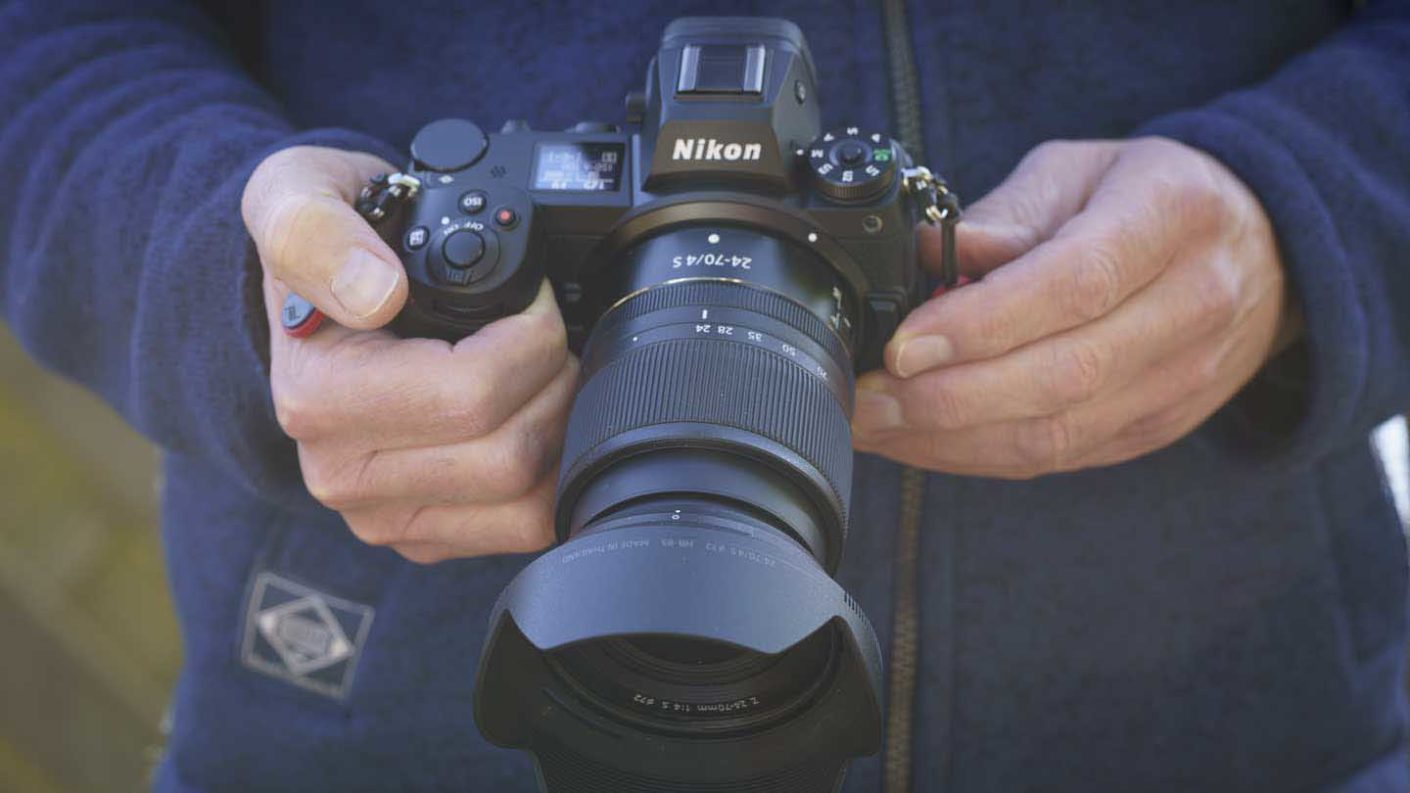
Specification
- Camera type: Full-frame mirrorless camera
- Announced: 14th October 2020
- Lens mount: Nikon Z
- Sensor: Full-frame (FX 35.9 x 23.9mm) 24.5MP backside illuminated (BSI) sensor
- Processing engine: Dual Expeed 6
- Stabilisation: 5-axis in-body VR
- Sensitivity: ISO 100-51,200, expandable to ISO 50-204,800
- Maximum continuous shooting rate: 14fps for up to 200Jpegs or 124 12-bit uncompressed raw files
- Autofocus system: Hybrid with phase and contrast detection
- Phase detection points: 273
- Video resolution: 4K (3840 x 2160) 30/25/24p (60P to come with free firmware update in Feb 2021), Full-HD (1920 x 1080) 120/100/60/50/30/25/24p, Slow-motion mode 1920 x 1080 30p x4/25p x4/24p x5
- Viewfinder: 0.5-inch 3.69-million-dot electronic viewfinder
- Screen: 3.2-inch 2,100,000-dot tilting touch-screen
- Storage: Dual slot 1 XQD/CFexpress and 1 SD/SDHC/SDXC
- Dimensions (W x H x D): 134 x 100.5 x 69.5mm / 5.3 x 4 x 2.8-inches
- Weight: 705g with battery and memory card but without body cap, 615g body only
The Nikon Z6 II, with its 24.5Mp resolution, shares many features with its higher resolution sibling, the 45.7Mp Nikon Z7 II. However, the Z6 II’s lower resolution, when combined with the formidable processing capability of its dual Expeed 6 engines, allows it to achieve a faster shooting speed of up to 14 frames per second (fps). This camera can sustain this rate for a significant burst of up to 200 Jpegs or 124 12-bit uncompressed raw files.
In contrast, the Z7 II, while sharing a similar build, can reach a maximum shooting rate of 10fps. Despite its higher resolution, this rate is somewhat slower than the Z6 II, but it can still maintain this speed for up to 200 Jpegs or 77 12-bit uncompressed raw files. This difference highlights how the Z6 II is optimized for scenarios demanding higher speed, while the Z7 II focuses on delivering higher resolution images.
£1999
€2262For
- High-quality sensor
- Excellent user interface and control layout
- Weatherproof build
Against
- Eye detection can be unreliable in video mode
- Video Info menu not customisable
- 4K 60fps shooting will incur a 1.5x crop factor
Olympus OM-D E-M1X
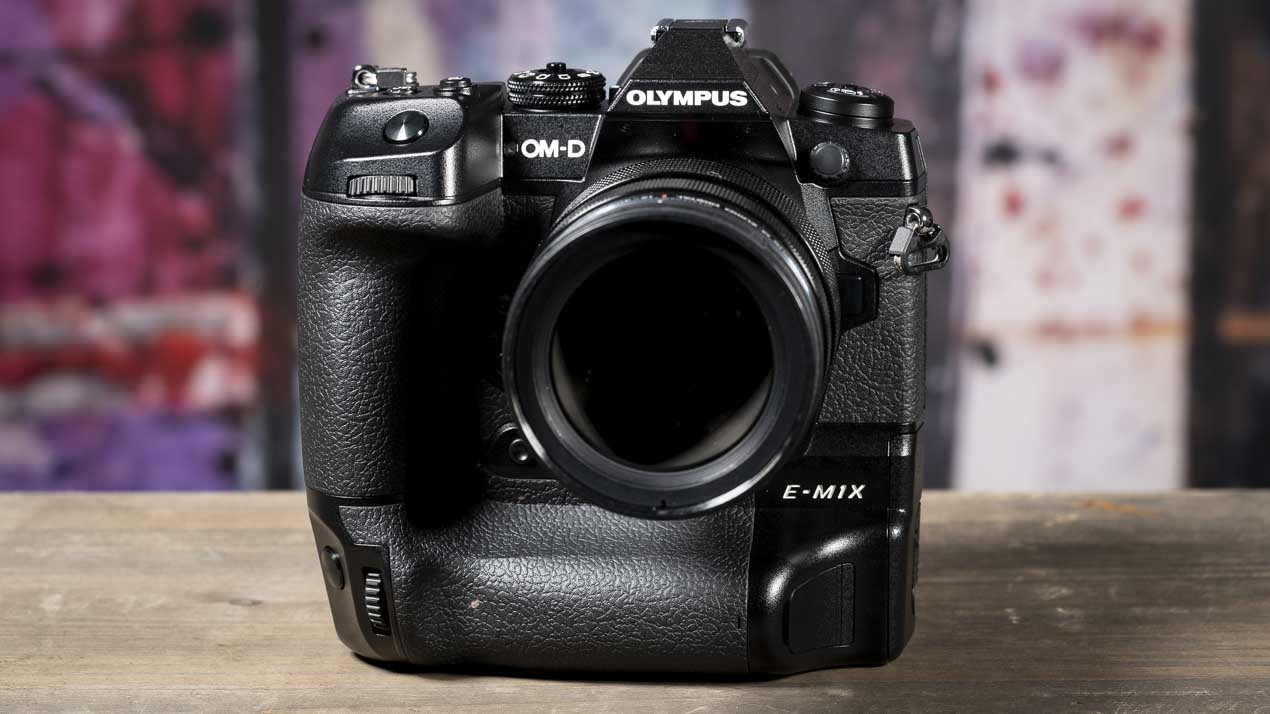
Specification
- Camera type: Mirrorless
- Sensor: 20.4Mp Four Thirds Type (17.3 x 13.0mm) CMOS
- Lens mount: Micro Four Thirds
- Sensitivity range: ISO 64-25,600
- Processing engine: 2x TruePic VIII
- Autofocus system: Hybrid with 121 cross-type points (800 in magnified view)
- Max continuous shooting rate: 18fps with AF tracking, 60fps with AF locked on first frame with electronic shutter
- Pro Capture High Mode: 60fps
- Pro Capture Low Mode: 18fps
- Burst Mode in S-AF: 15fps for 143 raw files
- Burst Mode in C-AF: 10fps for 283 raw files
- Max video resolution: 4K (4096 x 2160) at 24p
- Viewfinder: Electronic with 2,360,000 dots
- Screen: Touch-sensitive vari-angle 3-inch LCD with 1,037,000 dots
- Storage: 2x SD/SDHC/SDXC (UHS-II)
- Dimensions (WxHxD): 144.4 x 146.8 x 75.4mm
- Weight: 849g (body only), 997g (including 2 batteries and memory cards)
The OM-D E-M1X is a doubled-gripped mirrorless camera. It uses Olympus’s Pro Capture mode for shooting stills of very fast action. Thanks to the dual processors, there’s also no blackout in the viewfinder when this is in action.
In Pro Capture High mode, the shooting rate is 60fps, but the focusing is fixed at the start of the sequence. Switch to Pro Capture Low, and you can shoot at 18fps with continuous focusing.
Pro Capture mode is designed to help you record fleeting moments that are easily missed. To that end, when it’s activated the camera starts writing images to the buffer as soon as the shutter release is half-pressed. Once the shutter button is pressed fully, the 35 images that were buffered immediately before it was pressed are recorded along with 100 from immediately after.
There’s also a standard sequential shooting mode that uses the mechanical shutter. When this is in action, the maximum shooting rate in single AF mode is 15fps for 143 raw files. In continuous autofocus mode, the maximum is 10fps for 283 raw files.
A High Res Shot mode also delivers larger and more detailed images. The 50Mp Handheld mode captures the images quickly but then takes a little longer to render the final shot than the Tripod mode. Comparing the results with standard images reveals a nice jump in the level of detail.
Similarly, the 80Mp tripod mode delivers impressive results. It gives a significant boost to the size of print that you can make. That compositing also has a beneficial effect on the dynamic range as there’s more detail visible (and extractable) from the shadows.
£2199
$1999For
- One of the fastest cameras you can buy
- Pro Capture Mode offers lots of flexibility
- High Res Shot mode is very impressive
Against
- It's very big and heavy for a Micro Four Thirds camera
- Four Thirds sensor
- Need more smaller, lighter, more affordable long telephoto lenses
Sony A9
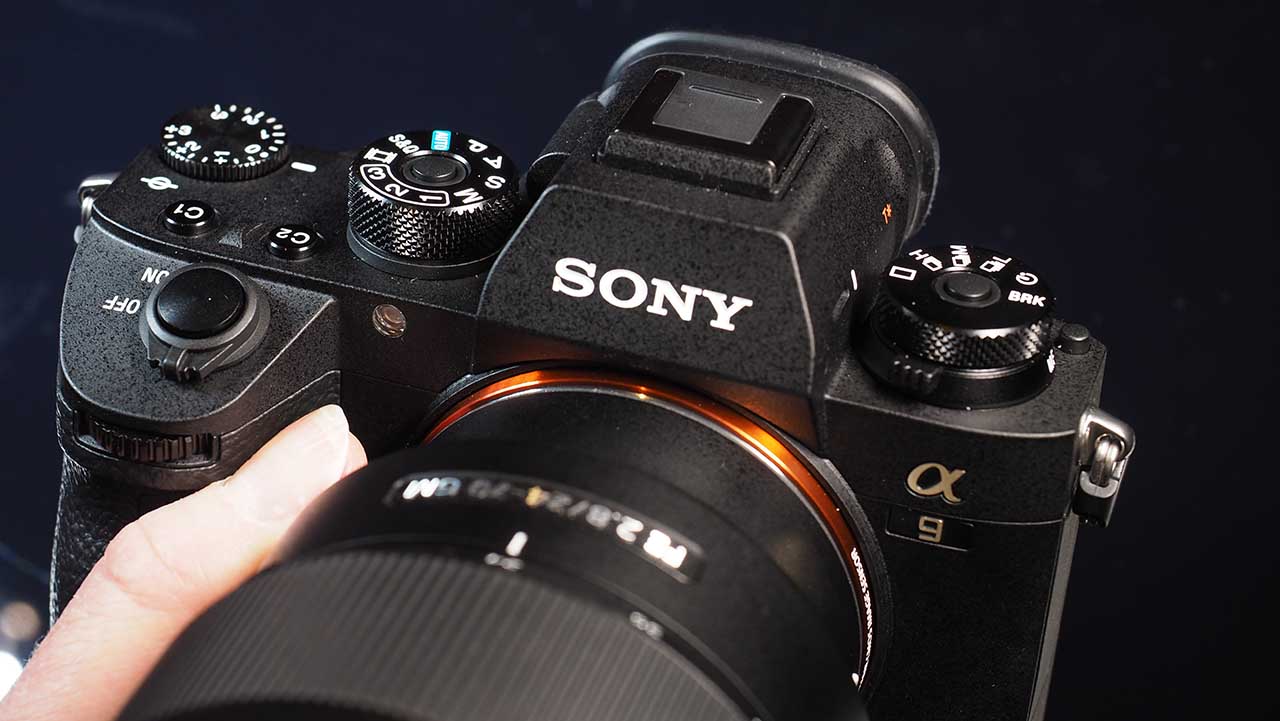
Specification
- Sensor: 24.2-megapixel full-frame sensor
- AF system: 693-point wide area phase detection AF
- Burst Mode in C-AF: 20fps
- Raw Files at 20fps: 241
The Sony A9’s 24.2-megapixel full-frame sensor’s integral memory works in tandem with the Bionz X processor to enable faster data readout. As a consequence the Sony A9 has a full resolution maximum continuous shooting rate of 20fps (frames per second), that’s with continuous autofocus and metering.
That blistering pace can be maintained for up to 241 raw files or 362 jpegs – equating to roughly 12 seconds shooting continuously in raw format or 18 seconds in jpeg format.
So you should able to capture every fleeting expression on a top-class 100m sprinter’s face from the gun firing to the finish line and still have some capacity for the winner’s celebration.
In continuous AF mode the A9 is quick to latch onto moving subjects and it follows them with apparent ease. Angela, our reviews editor, normally shies away from settings that give a camera free rein to determine the AF point to use, but the A9 performed superbly in Wide AF mode even when there was a cluttered background such as cliffs or rocks behind the moving birds.
When she was using continuous AF mode to photograph my dog on the beach, She noticed that if he was still the camera sometimes focused on a point a little closer to her than he was, but as soon as he started moving it snapped onto him. If he ran towards her his head got the AF system’s attention; if he ran away it was his backside.
Find the latest deals on the Sony A9 at Amazon UK and Amazon US.
£3399
$2998For
- Fast, clever AF system
- Superb EVF
Against
- Needs more fast, long lenses
Nikon D6
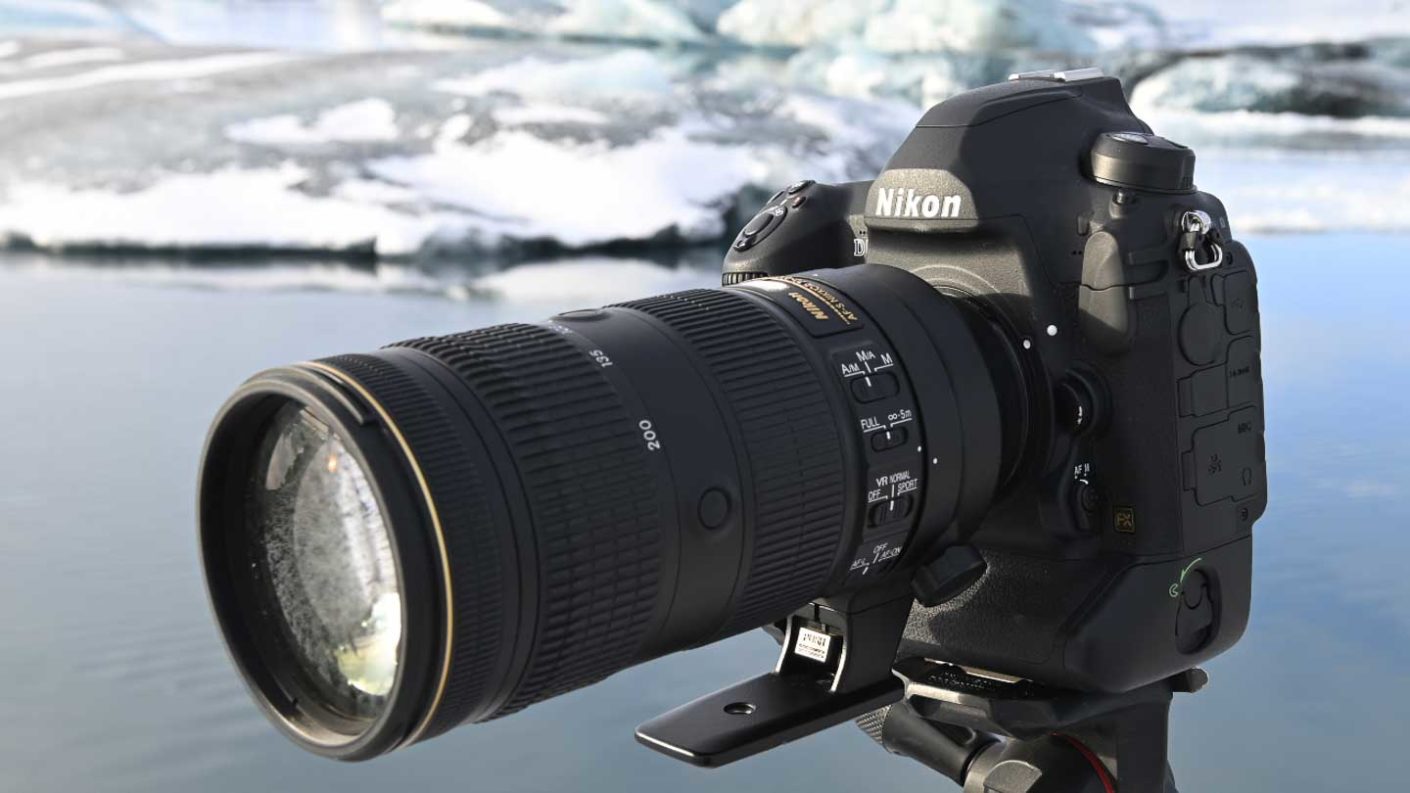
Specification
- Camera type: DSLR
- Sensor: 20.8Mp full-frame (35.9 x 23.9mm) CMOS
- Processing engine: Expeed 6
- Continuous shooting: Up to 14 fps, Continuous Low: 1 to 10 fps, Continuous High: 10 to 14 fps, Quiet: 1 to 5 fps
- Shutter speed: 1/8000 to 30sec, Bulb; Time; X250
- Autofocus system: Viewfinder: TTL phase-detection with 105 focus points, all cross-type, 15 at f/8, Live view: Contrast-detect AF, focus point selected by camera when face detection or subject-tracking is used.
The Nikon D6, while not a radical departure from its predecessor, the D5, does offer notable improvements in its continuous shooting capabilities and the practical usability of this feature.
Both the D6 and the D5 have a peak shooting rate of 14 frames per second (fps). However, the D6 introduces a significant enhancement by maintaining full autofocus and exposure functionality at this 14fps rate. In contrast, achieving 14fps on the D5 requires locking up the mirror, with focus and exposure settings being fixed at the start of the sequence.
For photographers using the D5 who require a fast shooting rate along with continuous autofocusing and exposure measurement, the only option is to reduce the speed to 12fps.
Although the increase of 2fps in the D6 might seem minor, it can be quite significant for capturing very fast action and transient moments, especially in sports photography. This improvement in the D6 makes it a more versatile and efficient tool for capturing fast-moving subjects.
£6299
$6496.95For
- 14fps shooting with continuous focusing
- Superb AF system for use with the viewfinder
- Great low-light performance
Against
- Contrast detection AF in Live View and video mode
- Fixed screen is frustrating in Live View mode
- Huge price
Canon EOS-1D X Mark III
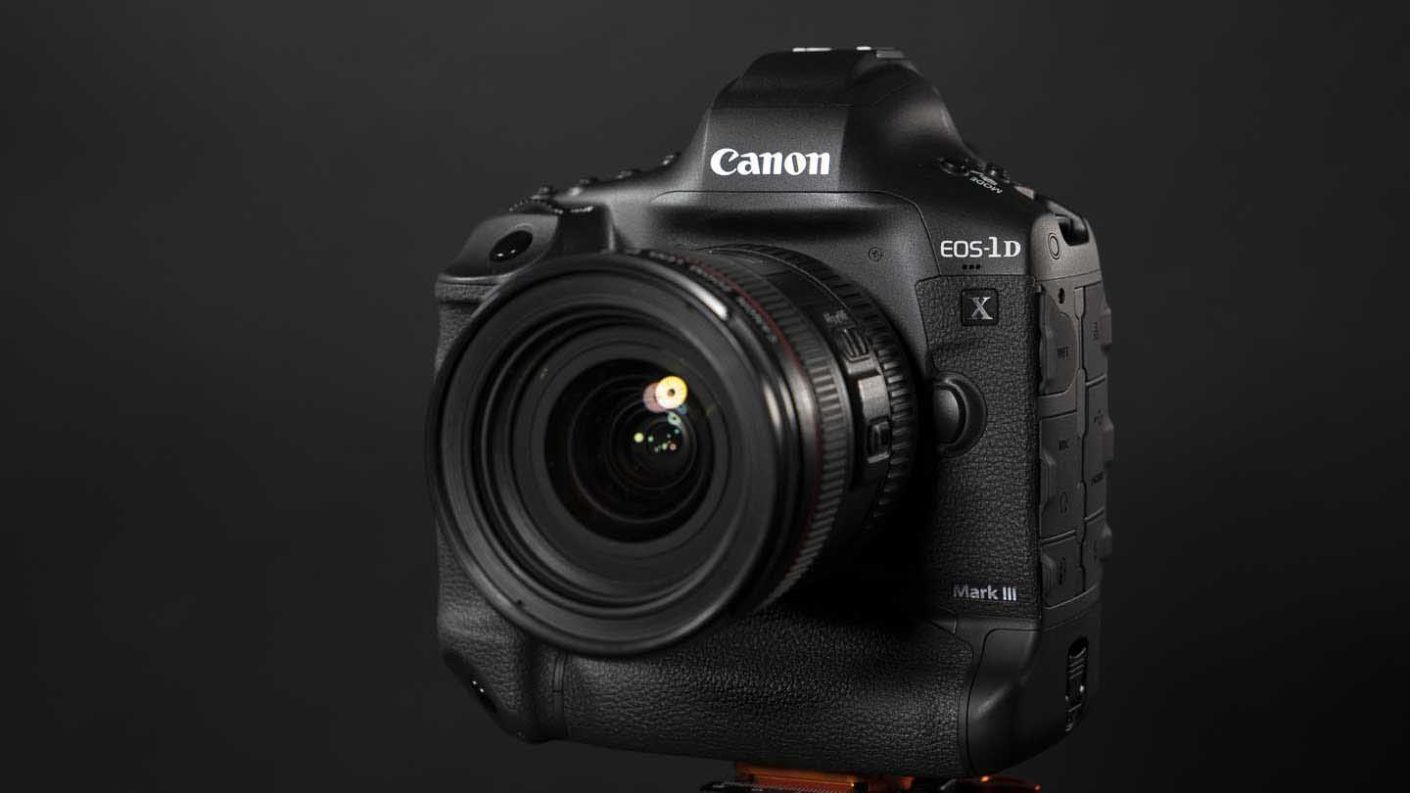
Specification
- Camera type: DSLR
- Announced: 7th January 2020
- Sensor: Full-frame (24x36mm) 20.1Mp CMOS
- Lens mount: Canon EF
- Processing engine: Digic X
- Sensitivity range: Stills: 100-102400, expandable to ISO 50-819,200, Video: ISO 100-25600, expandable to ISO 100-204,800
- Autofocus system: Viewfinder: phase detection with 191 points, 155 cross-type AF at f/4 including 1 dual cross type at f/2.8, Live View: Dual Pixel CMOS AF with Face+Tracking and 3,869 points
- Max continuous shooting rate: Viewfinder: 16ps, Live View: 20 fps with mirror locked up with exposure and AF tracking
- Max video quality: 4K raw (5496x2904) at 23.98, 24, 25, 29.97, 50, 59.94fps, 4K DCI (17:9) 4096x2160 at 23.98, 24, 25, 29.97, 50, 59.94fps intra or inter frame
- Viewfinder: Optical, pentaprism type with 100% coverage, 0.76x magnification and 20mm eyepoint
- Screen: Fixed 3.2-inch / 8.01 cm TFT with 2,100,000 dots
- Storage: Dual CFexpress 1.0 Type B
- Dimensions (W x H x D): 158 x 167.6 x 82.6mm
- Weight: 1250g body only
The Canon EOS-1D X Mark III excels in Live View mode, where it can achieve shooting speeds of up to 20 frames per second (fps) with continuous focusing. When using the viewfinder, the camera is still impressively fast, capable of shooting at up to 16fps.
One of the most remarkable features of the 1D X Mark III is its ability to maintain these high shooting rates. It can shoot over 1000 raw files consecutively or fill the memory card with Jpegs without slowing down.
Additionally, the 1D X Mark III is equipped with Canon’s renowned Dual Pixel CMOS AF system. This feature ensures that the camera’s focusing is both quick and effective, particularly in Live View mode. Its capability to track and maintain focus on fast-moving subjects makes it an excellent choice for action and sports photography.
£6499
$6499For
- 16/20fps continuous shooting with a massive burst depth
- Excellent AF system
- Great new Smart Controllers
Against
- Huge price
- Fixed screen is frustrating in Live View and video mode
- Big and heavy

